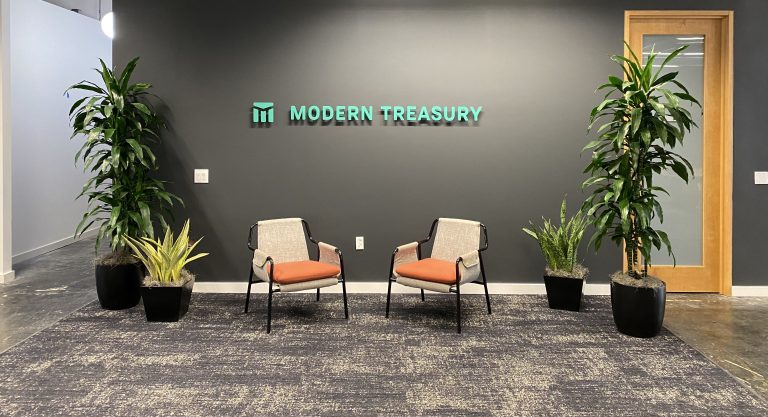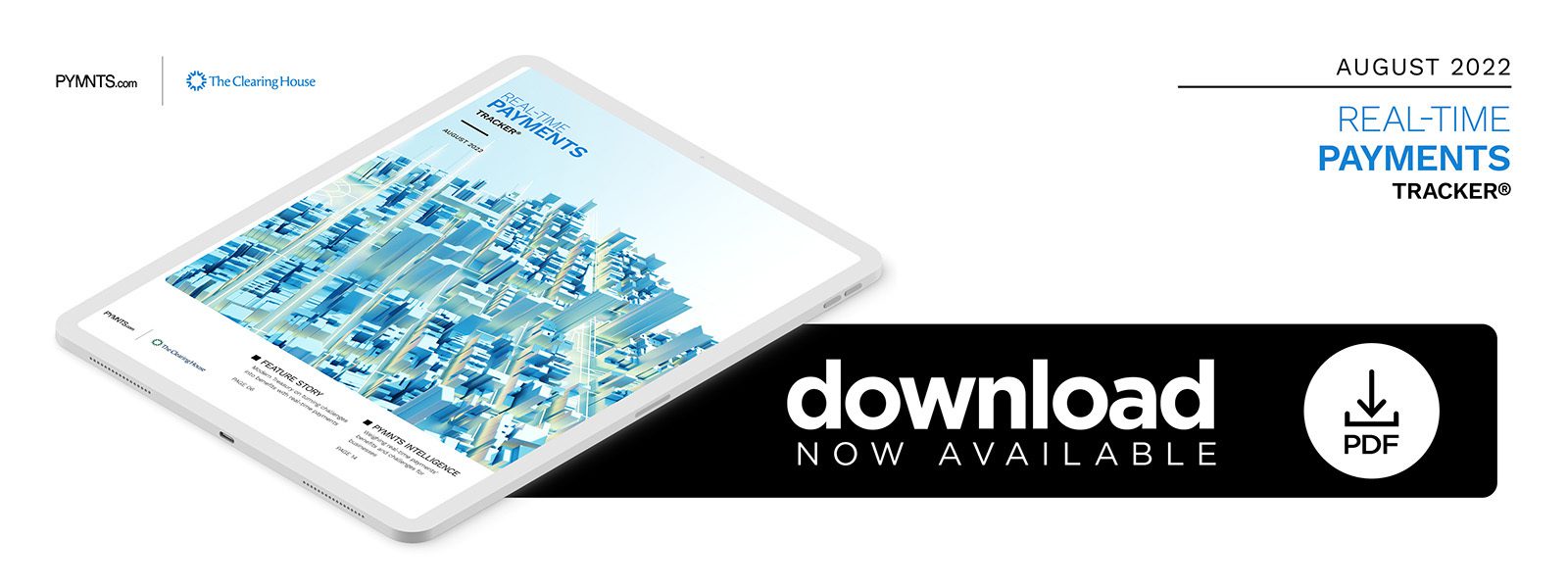Modern Treasury on Turning Challenges Into Benefits With Real-Time Payments

Despite well-known fears, businesses that actually use real-time payments experience fraud 25% less often than those companies that use other methods to move money to end user accounts. Modern Treasury’s Chief Growth Officer Rachel Pike tells PYMNTS how implementing real-time payments can maximize cash flow while lowering risks.
As a software provider to many businesses, Modern Treasury helps its customers improve business processes, including finding ways to streamline the payments workflow, according to chief growth officer Rachel Pike. The company witnesses the challenges clients face in transitioning to newer payments offerings — but also the benefits they gain. Pike told PYMNTS in a recent interview that most businesses she encounters are excited about the potential of real-time payments, such as those available via The Clearing House’s RTP® network, and any concerns can be easily addressed.
Some potential users, for example, have expressed concerns regarding real-time payment fraud risk. Pike explained that payments with The Clearing House’s RTP network actually present a lower fraud risk than other forms of payment.
“It’s credit only — it’s push only,” she said. “I can’t pull money out of your account, and a lot of the fraud risk we see out there is from access to payment rails where you can pull money at will.”
Know your customer (KYC) and other elements of a good compliance program help ensure that all payments are protected against fraud, she said. Institutions still need to monitor both senders and recipients for red flags, but those same protocols should be in place even for wire transfers.
“All of that should be in place for a company that’s planning to implement [real-time payments], but it should be in place anyway,” Pike said. “And overall, the risk is still dramatically lower than it would be for other payment rails and systems that they’re running.”
Understanding RTP Implementation
Pike said that most of Modern Treasury’s potential clients are much less concerned about fraud risk related to real-time payments and more concerned about how to implement those payments.
“We actually see a market that’s really hungry for the opportunity to delight the payee, to go to a credit-only rail or to replace an existing credit-only rail with a faster, cheaper solution,” she said. “We see more complexity in having a market understand how to implement a system like this and how to run it at scale than we do hesitancy about the concept overall.”
Pike said businesses can reach out to technology providers already facilitating connections to the RTP network, such as Modern Treasury, to get a better idea of what they need to do. At the same time, a business’s best first step may simply be reaching out to its FI.
“Everyone who is running RTP systems is doing so in partnership with their bank, and they can provide a lot of expertise,” she said.
Adjusting to a Different Cash Flow Approach
Money flows in and out faster with real-time payments, improving cash flow, but that also requires businesses to adjust how they approach payments, Pike said. On traditional rails, batch processes make sense, with both payments and invoices going out in single batches on a certain day or at a certain time. That completely changes once a business has access to the RTP network.
“The importance of using software for cash reconciliation goes up, and the ability to rely on human matching becomes harder because now payments are coming in every second and being released every second,” Pike explained.
Automatic reconciliation is both a benefit and a challenge for businesses coming onto the RTP network, she said. It simplifies processes and cuts down on employee workload, but it also requires system upgrades that can meet new demands. The roles that employees play move to areas such as strategic work and exception management. That can be a significant transformation for both companies and teams, but it is also a beneficial one.
“You actually have a real-time view into the cash you have because it’s coming in and it’s going out as it should: at the moment you want it to go,” Pike said. “You’re not doing this earmarking, where you have to hold money for some future thing that’s supposed to happen.”
Getting the Infrastructure Right
The hardest part of addressing the technology side of real-time payments is not just setting up systems that can handle them but also making sure those systems can scale and be maintained to meet future demand. Pike said this is a benefit of working with technology partners and a company’s FI. The situation compares to using a provider for cloud computing rather than a business running its own server stack. Such a partnership can reduce time to market and result in lower ongoing costs, she noted.
Pike believes that real-time payments present an enormous opportunity and that countries ahead of the U.S. in real-time payments, such as the U.K., have already seen increased liquidity and trust. To really benefit from that overall economic transition, companies will need to be a part of it. The sooner they begin working toward real-time payments, the faster those benefits will come.
